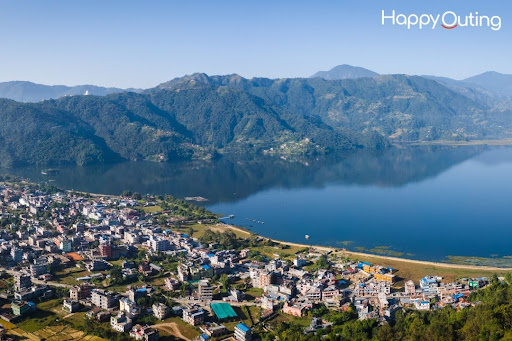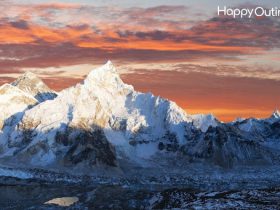The sacred Muktinath Yatra during the winter season, between November and March, requires unique preparation. Nestled in Nepal’s Mustang district, the temple sits at an elevation of 3,800 meters and enjoys reverence both in Hinduism and in Buddhism. However, on account of freezing temperatures and snow-clad terrain during winter months, while the pilgrimage is highly rewarding, it is also something to be reckoned with if one is not sufficiently prepared. These essentials will make any pilgrimage to Muktinath safe and spiritually rewarding.
Why Winter Yatras to Muktinath Demand Extra Planning
Sharp temperature drops, icy winds, sometimes blocked routes due to snow, and seasonal treks to Muktinath are all quite stark contrasts to eleventh treks to Muktinath. Temperatures might go below zero at nighttime, and the daytime is cold but bearable if those cold-weather clothes are with you. Anybody opting for a Nepal tour package on his own, or anybody interested in a good Muktinath tour package from Gorakhpur, must be serious about taking seasonal precautions.
It is not impossible to travel to Muktinath in winter—it simply requires mountain gear appropriate for the higher altitudes of the Himalayas.
1. Thermal Base Layers
Try to wear a very good base layer for both the top and bottom. They trap body heat and stand as the first line of defense against the cold. Choose materials that will keep you dry and warm by wicking away moisture. Cotton is to be avoided at any cost since it holds moisture, leading to chills.
Tip: Always have at least two sets so that you can change depending on the length of your trip.
2. Down Jacket or Insulated Outerwear
The outermost layer should be insulated and windproof. Down jackets, with their lightweight nature, offer excellent insulation and are the most favorable for an altitude like this. Should you be allergic to feathers, please use synthetic insulated jackets that give just as much warmth.
It should feature a hood and provide full zip-up protection around the neck and wrists.
3. Woolen Cap, Scarf, Gloves
The fastest heat loss occurs through the head and extremities. Therefore, wear a thermal or woolen cap, preferably one that covers the ears. A fleece scarf or a neck gaiter will shield the throat and face against biting cold winds. Gloves should be thermal, preferably waterproof.
Extra tip: Carry an extra pair of gloves if the ones you use get wet.
4. Waterproof Trekking Shoes and Wool Socks
During the journey, footwear matters a lot. Opt for high-ankle waterproof trekking shoes with a good grip for negotiating the slippery snow and rocky paths. With these shoes, wear thick woolen socks—merino wool is the best.
Never travel without packing extra pairs of socks; cold feet turn an impure trip into a drudgery.
5. Sunglasses and Sunscreen
They sound ridiculous, but in fact, snow reflects the sunlight and causes sunburns quite easily. It is important and necessary to put on sunglasses with UV protection to protect your eyes from glare that can result in snow blindness. Then, use high-SPF sunscreen and lip balm to avoid dryness along with chapped lips.
6. Reusable Water Bottle and Thermos
Even if it is cold, drink plenty of water throughout the day. Carry a reusable water bottle and thermos flask with you. Taking hot water or herbal tea in your thermos will fight the chill during long stretches of the trip. Avoid using plastic bottles; they become brittle in freezing temperatures.
7. A Sleeping Bag Rated for Sub-Zero Temperatures
Winter travel to Muktinath becomes all the more adventurous with the sight of icicles and snow at every corner. Inclement weather calls for some hiking in the gargantuan storm shelters or wooden huts. Provide for a sleeping bag that is looked forward to in minus 10°C or below and lightweight enough to carry along. Even with those rudimentary heater rooms, sleeping bags add extra insulation and guarantee an excellent sleep.
8. Medicines and Other Health Essentials
Winter climates worsen or trigger those respiratory problems. Carry some basic winter medication like cough drops, decongestants, and paracetamol. If you are prone to altitude sickness, then talk to your doctor about preventive medicines, such as additional Acetazolamide. Keep a small first aid kit with bandages, antiseptic, and a pain reliever.
9. Moisturizers and Hand Cream
The skin dries super fast in cold mountain air. Take a good moisturizer, hand cream, and petroleum jelly for protection from the cold that leads to flaking or itchiness or even frostbite in emergencies. Keep applying it often, especially at night and after you wash your face or hands.
10. Compact Daypack
Along with your main luggage, carry one lightweight but sturdy backpack that fits the needs of day trips. Carrying water and snacks, gloves, sunglasses, and other emergency items will fare well in such a backpack.
Note: Your daypack must always carry some ID, permits, and a little cash in the local currency.
A Customized Travel Experience
For those who want a smooth planning process, most Nepal tour packages will arrange their transport, stay, permits, and meals for them. During winter, these packages usually make special arrangements; for example, for warm accommodation or guided support if snow sets in.
If departing from India, Muktinath tour packages from Gorakhpur are ideal. These have been designed with Indian pilgrims in mind, with train-road connectivity and options for a helicopter ride if the snow gets extreme.
Final Thoughts
Visiting Muktinath in winter can be a beautiful spiritual adventure—if done well. Though the snow-covered temple flanked by the Himalayas is enthralling, the visit is highly dependent on how well you have prepared.
Pack well, travel well, and stay warm. Let the cold winds of the Himalayas shower down to cleanse your soul and not tramp you unwarned.



















Leave a Reply